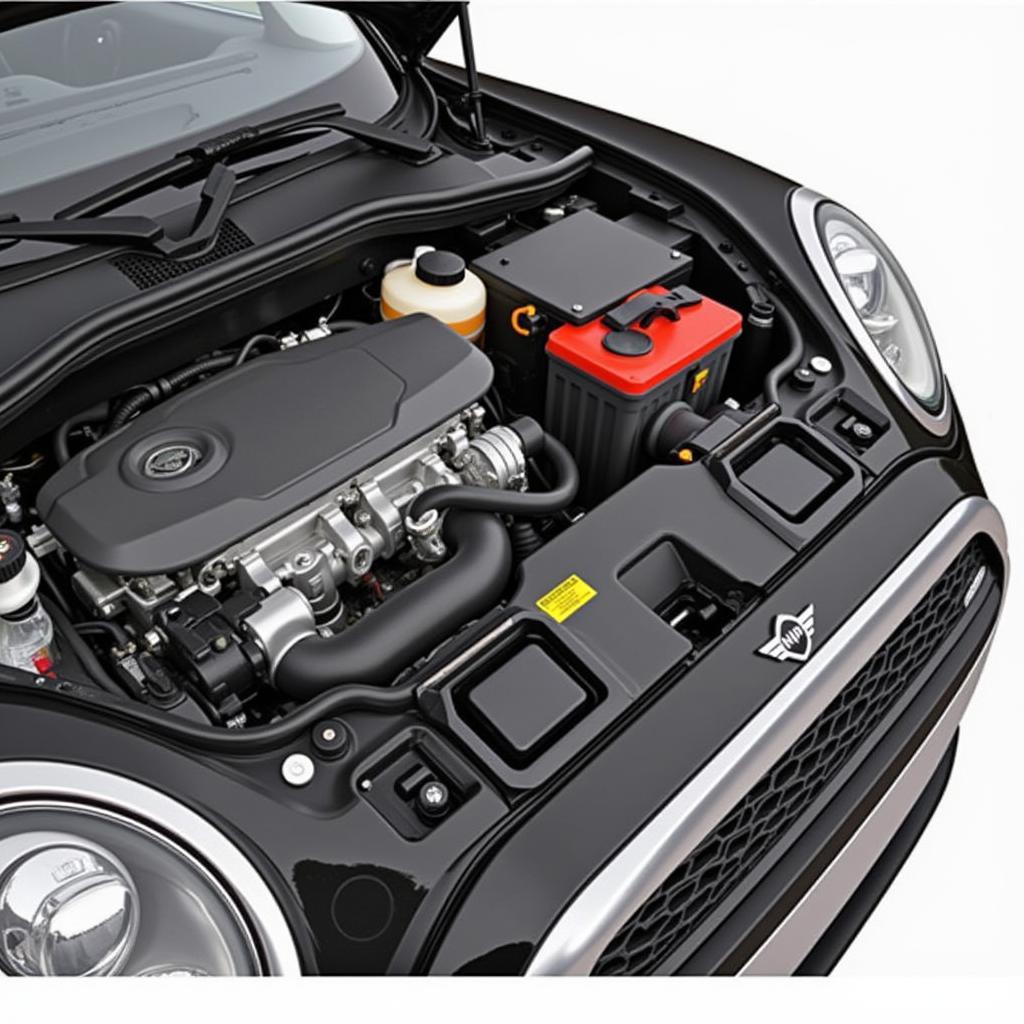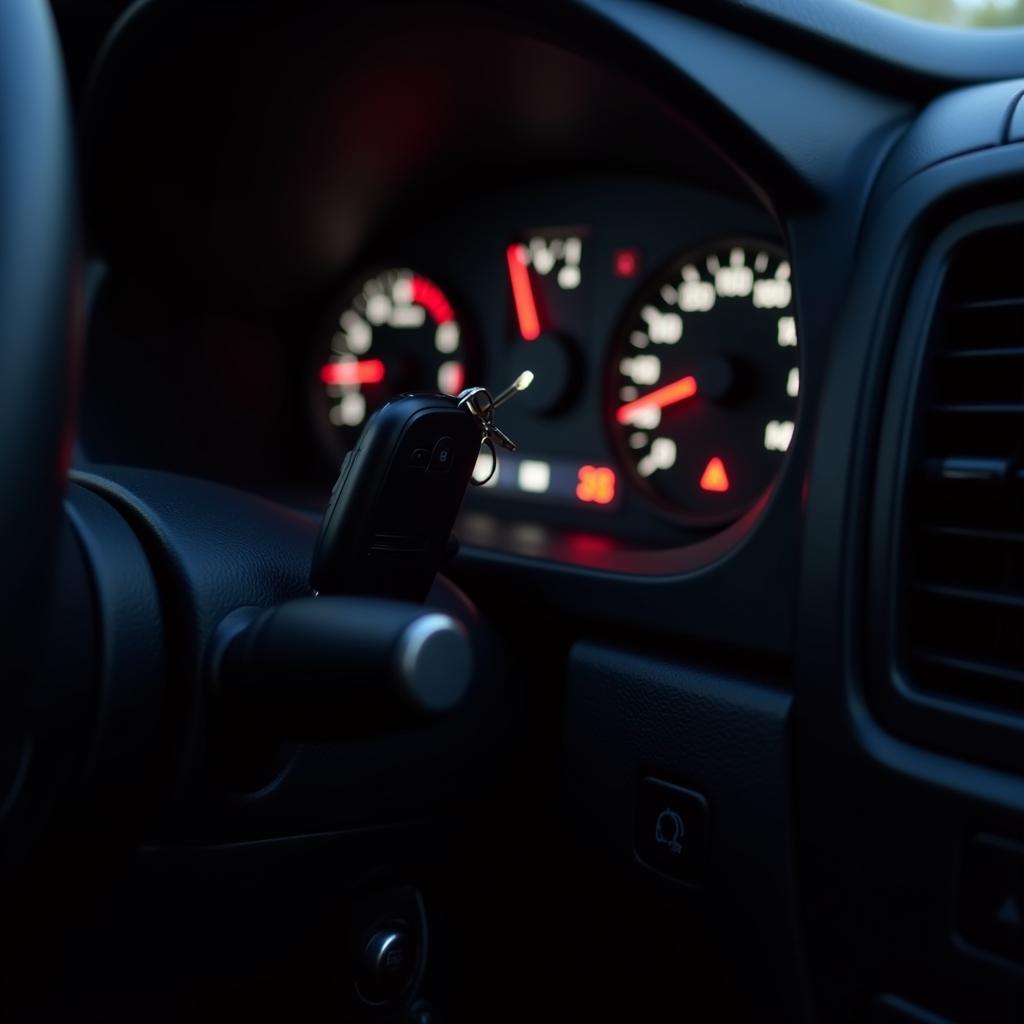Mini Cooper battery problems can be a real headache, leaving you stranded and frustrated. Whether you’re dealing with a slow crank, flickering lights, or a completely dead battery, understanding the potential causes and solutions is crucial. This guide dives deep into the common battery issues plaguing Mini Coopers and provides expert advice on troubleshooting, remote diagnostics, and even programming solutions for a swift recovery. Learn how to diagnose the problem yourself and even fix it remotely.
Many Mini Cooper owners experience battery drain issues. This can manifest in various ways, from a slow engine crank to the car not starting at all. Sometimes, the problem is as simple as a loose connection, but other times, it can be more complex, involving parasitic draws or faulty charging systems. Knowing how to identify the root cause is the first step towards a solution. For example, if your van battery keeps draining, the issue might be similar to a Mini Cooper’s, pointing to a parasitic draw.
Common Mini Cooper Battery Problems
Understanding the Basics of Mini Cooper Battery Issues
Several factors can contribute to Mini Cooper battery problems. Age is a primary culprit; as batteries age, their capacity to hold a charge diminishes. Extreme temperatures, both hot and cold, can also negatively impact battery performance. Furthermore, leaving lights on, using power-hungry accessories with the engine off, and short trips that don’t allow the battery to fully recharge can all lead to premature battery failure.
- Battery Age: Over time, the chemical processes within the battery degrade, leading to reduced performance.
- Extreme Temperatures: Both extreme heat and cold can stress the battery, affecting its ability to hold a charge.
- Parasitic Draw: Even when the car is off, certain electrical components can continue to draw power, slowly draining the battery.
- Faulty Alternator: A malfunctioning alternator can prevent the battery from recharging properly while the engine is running.
 Mini Cooper Battery Location
Mini Cooper Battery Location
Diagnosing Mini Cooper Battery Problems
Diagnosing the problem is the first step to getting your Mini back on the road. Start by visually inspecting the battery terminals for corrosion or loose connections. A simple cleaning with a wire brush and baking soda solution can often resolve connection issues. If the connections are clean and tight, you can use a multimeter to test the battery voltage. A reading below 12.6 volts indicates a weak or discharged battery. If you suspect a parasitic draw, you can use an ammeter to measure the current draw with the ignition off.
- Visual Inspection: Check for corrosion or loose connections at the battery terminals.
- Voltage Test: Use a multimeter to measure the battery voltage.
- Parasitic Draw Test: Use an ammeter to measure current draw with the ignition off.
Remote Diagnostics and Programming Solutions
Modern technology allows for remote diagnostics and even programming solutions to address certain Mini Cooper battery problems. Specialized software can access the vehicle’s onboard computer systems to identify fault codes related to the battery and charging system. This can save you time and money by pinpointing the exact issue before you even bring your car to a mechanic. If you’re having problems with your car radio draining your battery, you might find solutions similar to those for wiring car radio directly to battery, which can sometimes lead to unexpected drain issues.
Utilizing Remote Diagnostics for Battery Issues
Remote diagnostic tools can analyze various parameters, including battery voltage, charging system performance, and parasitic draws. This information can be invaluable in determining the root cause of your battery problems. For instance, if your car battery dies every few days, remote diagnostics can pinpoint the underlying issue quickly.
“Remote diagnostics are a game-changer for identifying complex electrical issues, especially with sophisticated systems like those in modern Mini Coopers,” says John Smith, Senior Automotive Electrical Engineer at Advanced Auto Diagnostics. “The ability to analyze data remotely saves time and helps get the car back on the road faster.”
Addressing Parasitic Draws and Other Culprits
Identifying and addressing parasitic draws can be tricky. However, a systematic approach can help you pinpoint the culprit. Start by disconnecting non-essential electrical components one by one while monitoring the current draw with an ammeter. If your reasons battery dies are related to a faulty radio setup, learning about solutions for using Bluetooth, like kenwood car radio listen to phone music bluetooth setup might help in indirectly understanding power consumption patterns.
“Parasitic draws can be elusive, but with a methodical approach, they can be identified and eliminated,” says Jane Doe, Lead Technician at Auto Electrical Solutions. “Sometimes, the culprit is something as simple as a glove box light staying on.”
In conclusion, Mini Cooper battery problems can be frustrating, but understanding the common causes and employing diagnostic techniques, including remote solutions, can help you get back on the road quickly. Don’t let a dead battery ruin your drive; take control and solve the problem efficiently. Remember to always consult a qualified mechanic if you’re unsure about any aspect of the diagnostic or repair process.
FAQ
- How long do Mini Cooper batteries typically last? Mini Cooper batteries usually last between 3 to 5 years.
- Can I jump-start a Mini Cooper with a dead battery? Yes, you can jump-start a Mini Cooper, but follow the correct procedures to avoid damage.
- What are the signs of a bad alternator in a Mini Cooper? Dimming headlights, flickering interior lights, and a whining noise from the engine compartment can indicate a bad alternator.
- How can I prevent Mini Cooper battery problems? Regular battery testing, avoiding short trips, and turning off accessories when the engine is off can help prevent battery problems.
- Where is the battery located in a Mini Cooper? The battery location varies depending on the model, but it’s typically under the hood or in the trunk.
- Can extreme cold weather affect my Mini Cooper’s battery? Yes, cold weather can significantly reduce battery performance.
- What should I do if my Mini Cooper’s battery keeps dying? If your battery keeps dying, have it tested and check for parasitic draws.


